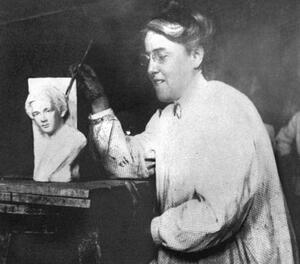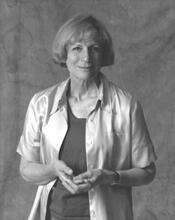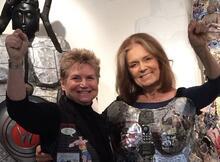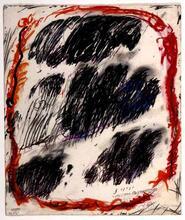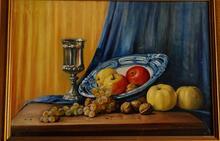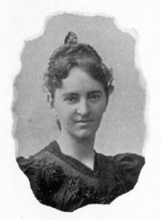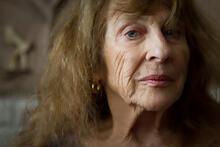Rose Kohler
A celebrated artist and a gifted educator, Rose Kohler wrote extensively on the power of art to influence emotion and ideology for good or ill. She studied at Hunter College, the Cincinnati Arts Academy, and the Art Students League of New York, and had exhibits at the Art Institute of Chicago, the Pennsylvania Academy of Fine Arts, and the National Academy of Design in New York, among many others. She was a teacher in, and later the chair of, the National Council of Jewish Women’s religious schools in Cincinnati, Ohio. She wrote extensively on the importance of Jewish education, as well as on the origins and evolution of Jewish religious art and its potential to spark a passion for Jewish culture and ideals in both Jews and non-Jews.
Rose Kohler was a multitalented woman who was known as an accomplished painter and sculptor. She was a teacher in, and later the chair of, the National Council of Jewish Women’s religious schools in Cincinnati, Ohio, and wrote many articles on art and religion.
Early Life & Education
Born in Chicago, Illinois, on March 21, 1873, Rose Kohler was the daughter of Johanna (Einhorn) Kohler and Rabbi Kaufmann Kohler. Dr. Kohler was a leader in Reform Judaism, the rabbi of Temple Beth-El on Fifth Avenue in New York, which later merged with Temple Emanu-El. He was also the president of the Hebrew Union College in Cincinnati. Rose Kohler had a sister, Lili, and two brothers, Max and Edgar, both attorneys.
Kohler studied at the training school of the Normal College (now Hunter College), Well’s School for Girls, and the Cincinnati Art Academy. She also attended the Art Students League of New York. Kohler had exhibits at the American Art Association, the Art Institute of Chicago, the Pennsylvania Academy of Fine Arts, and the National Academy of Design in New York City. Her works have also been displayed in Temple Emanu-El in New York (where she was once a member of the women’s auxiliary) and Temple Beth El in Detroit, as well as the temple of Hebrew Union College in Cincinnati. Kohler’s best-known works include a bust of her father, replicas of which are in Detroit, New York, and several other cities, and The Spirit of the Synagogue, a detailed medallion with an inscription that reads “My House shall be called a House of Prayer for all peoples,” replicas of which can be found in religious centers throughout the country. Other portrait reliefs and busts are on display in institutions in Chicago, New York, and Washington, D.C..
Jewish Art & Education
She wrote many articles on the origins and development of Jewish art. In “Art as Related to Judaism,” written for the National Council of Jewish Women, she stated, “Art for Judaism was not an end in itself ... it was but a means—and could become a powerful one—of illustrating, for Jew and non-Jew, Judaism’s religious mission for humanity.” Kohler discussed how art reflected hostility toward the Jew and how it was used to arouse hatred and start pogroms in some European countries.
</p>
Rose Kohler wrote about the importance of Jewish education in <i>Religious School Work</i> and stated there are those who feel “religious faith is like a life-preserver in time of trouble, and in times of health and peace is laid quietly on the shelf.” She urged Jewish mothers not to deprive their children of instruction in religion and encouraged them to put “proper stress upon that great educational force which more than any other trains the heart and the soul and ministers to that part of her child’s nature which requires nutrition as well as his body, his soul—that spark of the divine within him that molds his character for the good and sanctifies and hallows his entire life.”
Rose Kohler died in New York City on October 4, 1947, at age seventy-four. She is remembered not only for her beautiful works of art but also for her firm commitment to Jewish art, as well as her love of the Jewish religious school.
AJYB, 50:518.
BEOAJ.
Kohler, Rose. Archives. Temple Emanu-El, NYC.
Obituary. NYTimes, October 6, 1947, 21:1.
UJE, s.v. “Kohler, Kaufmann.”
Falk, Peter Hastings. Who Was Who in American Art. Sound View Press, 1985.
WWIAJ (1926, 1928, 1938).

